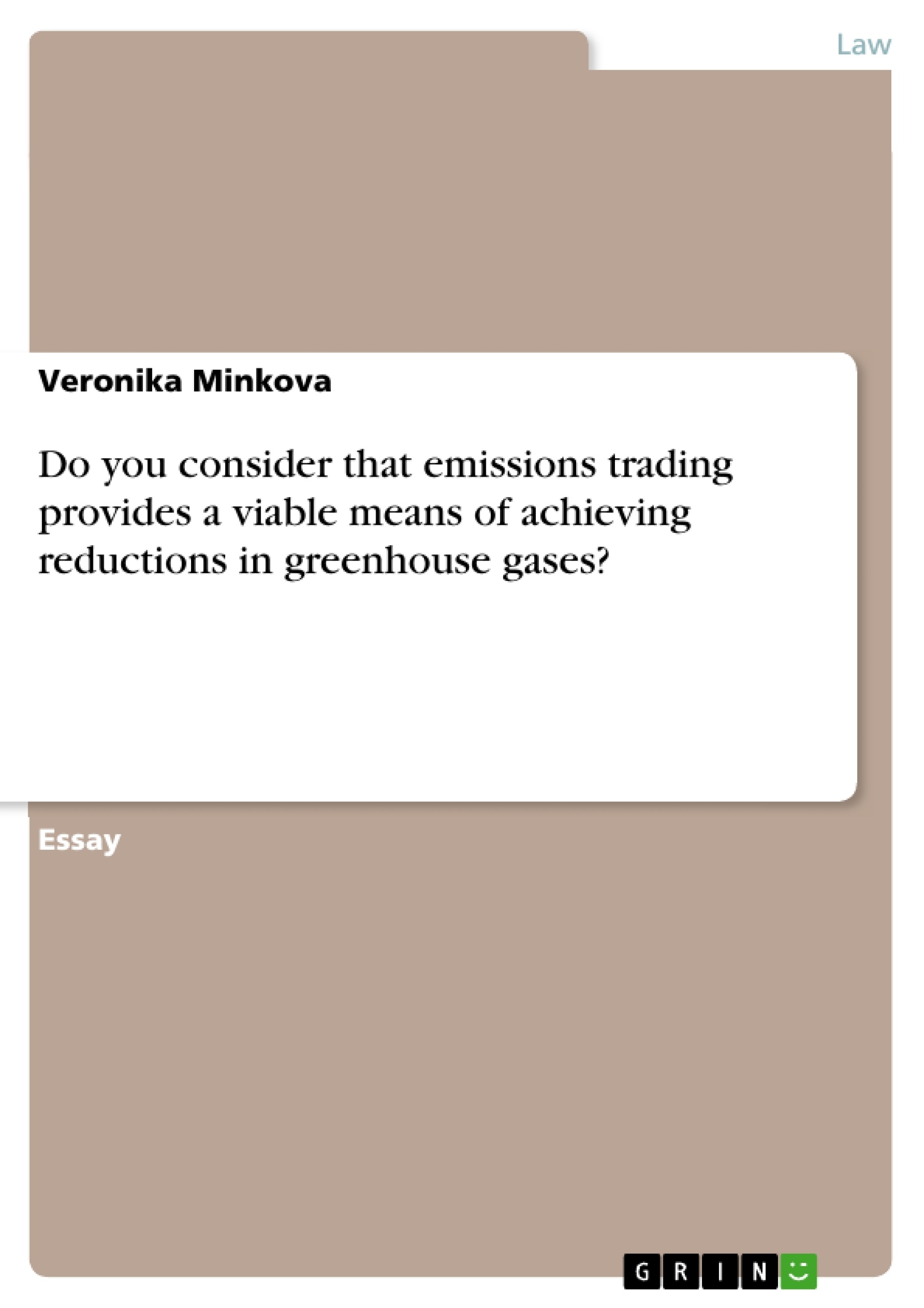Directive 2003/87/EC established a scheme for greenhouse gas (GHG) emission allowance trading within the Community which is in compliance with the overall commitment entered into by the European Community and its Member States under the Kyoto Protocol. It aims at reducing total emissions of GHG by at least 5% of the level of emissions in 1990, during the period 2008-12. The EU Emissions Trading Scheme (EU ETS) is based on the recognition that creating a price for carbon emissions is the most cost-effective way to achieve the deep reductions in global GHG emissions that are needed to prevent climate change from reaching dangerous levels. The first section of the present essay outlines the problem of climate change and how the international legal framework addresses it. In the second section, the cap-and-trade system is discussed as a flexible mechanism for climate protection. The next section identifies three theoretic models of the ETS: Economic Efficiency, Private Property Rights and Command-and-Control models. The fifth section outlines the EU ETS and discusses its main components. Finally, in the last section a critical analysis of the EU ETS is presented in terms of three main criticisms: target achievement, perverse incentives and economization of an ecological problem.
Inhaltsverzeichnis (Table of Contents)
- Introduction
- The international legal framework to combat climate change
- The Cap-and-trade system
- The Theoretic Rationale behind ETS
- Economic Efficiency Model
- Private Property Rights Model
- Command-and-Control Model
- The design of EU ETS
- Background of EU ETS
Zielsetzung und Themenschwerpunkte (Objectives and Key Themes)
This essay examines the European Union Emissions Trading Scheme (EU ETS), a cap-and-trade system designed to reduce greenhouse gas emissions. It begins by outlining the problem of climate change and the international legal framework addressing it. The essay then explores the cap-and-trade system as a flexible mechanism for climate protection, analyzing three theoretical models of the ETS: Economic Efficiency, Private Property Rights, and Command-and-Control. The essay concludes with a critical analysis of the EU ETS, focusing on its target achievement, perverse incentives, and the potential for economicizing an ecological problem.
- Climate Change and International Legal Framework
- Cap-and-Trade System for Climate Protection
- Theoretical Models of Emissions Trading Schemes
- Design and Implementation of the EU ETS
- Critical Analysis of the EU ETS
Zusammenfassung der Kapitel (Chapter Summaries)
The introduction presents the problem of climate change and the EU Emissions Trading Scheme (EU ETS) as a key tool for reducing greenhouse gas emissions. The second chapter explores the international legal framework for combating climate change, focusing on the United Nations Framework Convention on Climate Change and the Kyoto Protocol, which established the basis for emissions trading schemes.
Chapter three delves into the cap-and-trade system, which forms the core of the flexible mechanisms for climate protection. It explains how a cap-and-trade system works, highlighting its flexibility and cost-effectiveness in achieving emissions reductions.
The fourth chapter examines the theoretical rationale behind emissions trading schemes, presenting three perspectives: the Economic Efficiency Model, the Private Property Rights Model, and the Command-and-Control Model. Each model offers a different perspective on the role of government and the market in emissions regulation.
The fifth chapter focuses on the design of the EU ETS, exploring its background and key features. It outlines how the EU ETS operates as a company-level cap-and-trade system for carbon dioxide and other greenhouse gas emissions.
Schlüsselwörter (Keywords)
The primary keywords and focus topics of this essay include: climate change, greenhouse gas emissions, emissions trading, cap-and-trade system, EU Emissions Trading Scheme (EU ETS), Kyoto Protocol, international legal framework, economic efficiency, private property rights, command-and-control, externalities, over-exploitation of commons, regulatory frameworks, and critical analysis.
- Arbeit zitieren
- Veronika Minkova (Autor:in), 2011, Do you consider that emissions trading provides a viable means of achieving reductions in greenhouse gases?, München, GRIN Verlag, https://www.grin.com/document/179304



